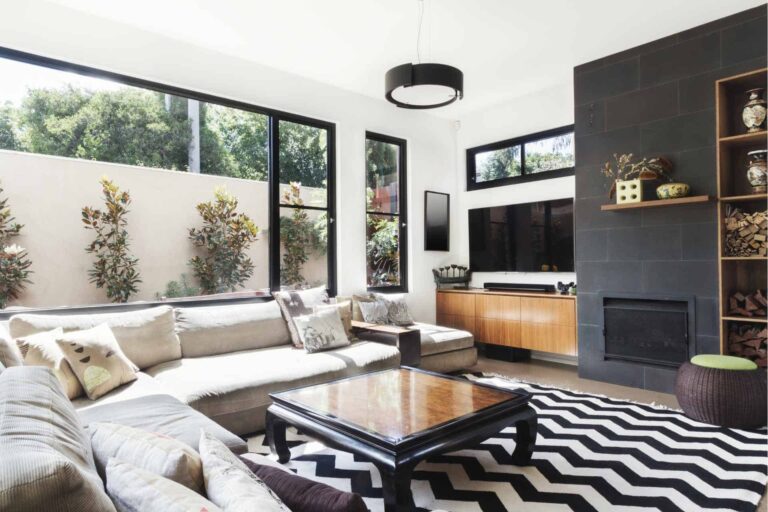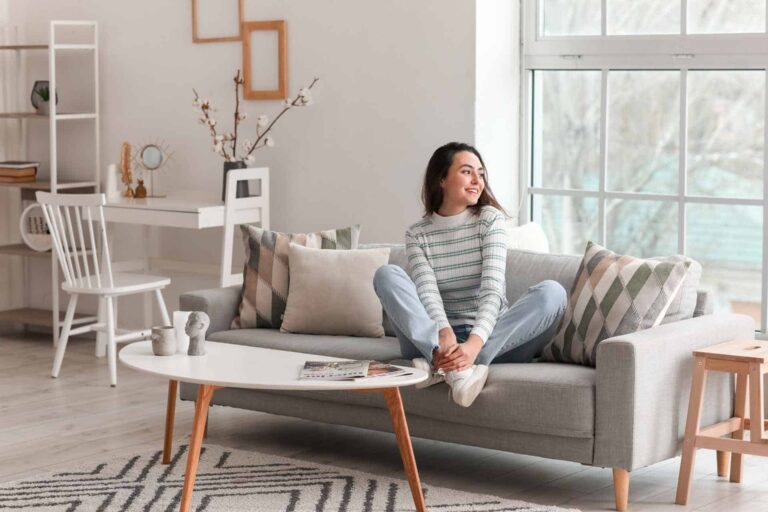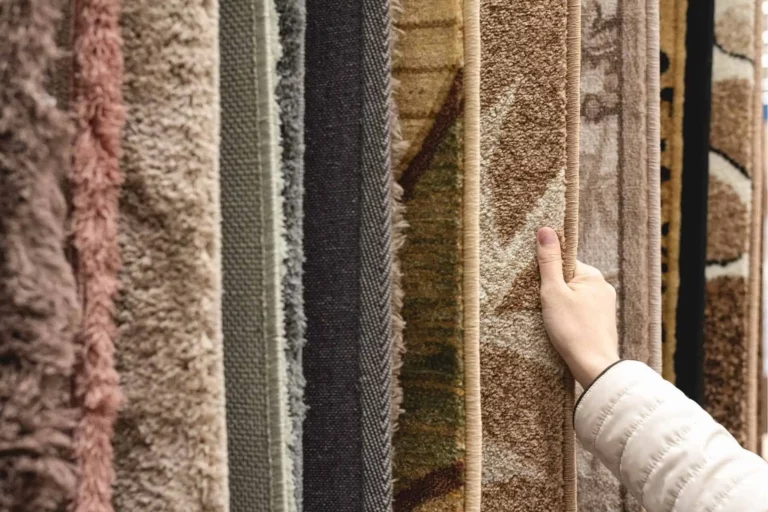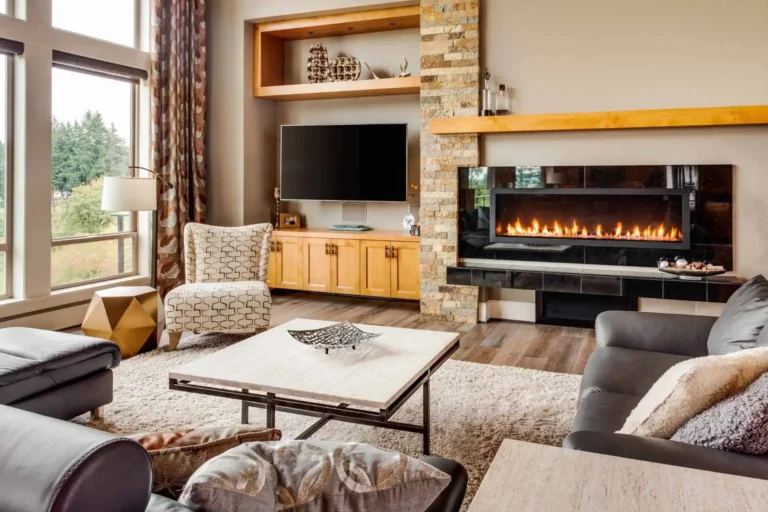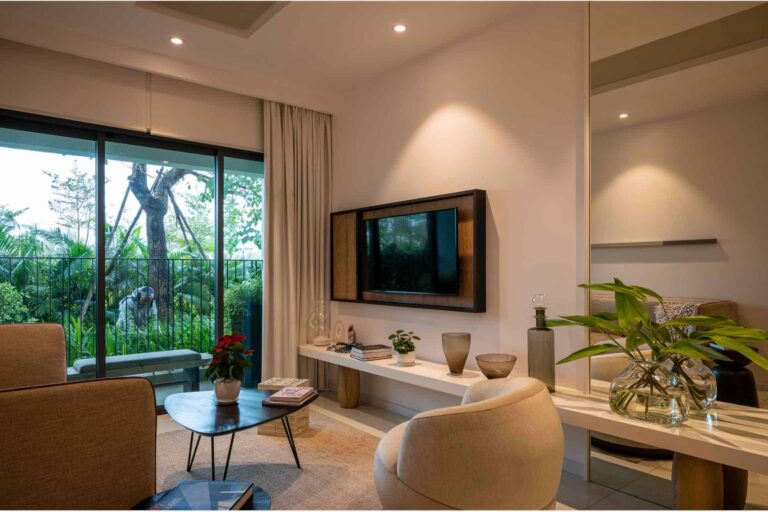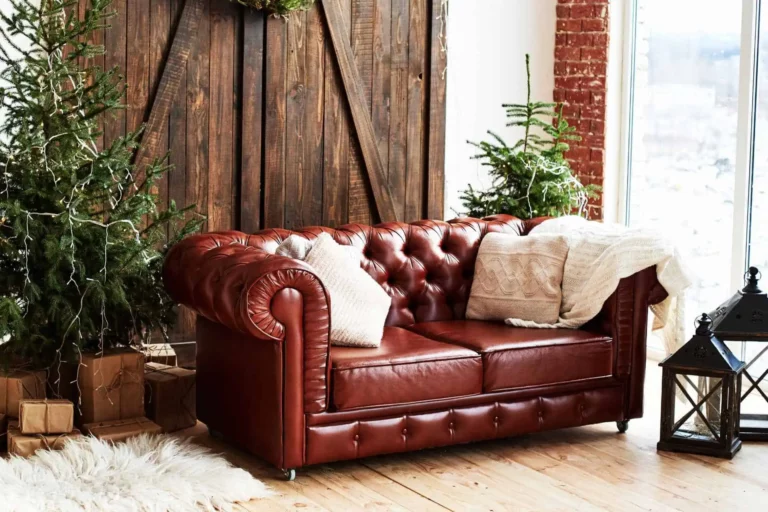Ultimate Guide: How Do I Choose a Curtain For My Living Room?
Choosing the right curtain for your living room may seem like a minor detail in your overall decor, but it can significantly impact the atmosphere and aesthetic of the space. The question “How do I choose a curtain for my living room?” often arises, as the selection process involves more than just picking out a design that catches your eye. It’s a thoughtful blend of understanding your living room’s style, coordinating colors, choosing the right fabric, getting the size and length right, considering the light and privacy, selecting the suitable curtain accessories, and taking into account practical aspects like cleaning and maintenance. This guide will walk you through each of these factors to help you make the best choice for your space.
Understanding Your Living Room Style
The first step in choosing a curtain for your living room is understanding the existing style of the space. Is it modern, traditional, rustic, or a combination? This will help you determine what type of curtain will fit best and complement the overall aesthetic.
Modern Living Room
In a modern living room, the design is typically characterized by sleek lines, simple color palettes, and high functionality. The curtains in such a space should mirror these qualities. Opt for minimalistic designs, solid colors, or subtle patterns that blend seamlessly with the interior. The fabric choice can vary from sheer to heavy depending on the amount of natural light you’d like in the room, but remember that modern design leans towards bright, airy spaces. Accessories should be kept minimal and functional, with clean-lined rods in metallic finishes like brushed nickel or stainless steel.
Traditional Living Room
In a traditional living room setting, the design is generally marked by classic furnishings, symmetrical arrangements, and a cozy, inviting ambiance. Curtains for traditional living rooms should enhance this comfortable, timeless feel. You can opt for fabrics like velvet or silk in rich, warm colors or classic patterns such as florals, stripes, or damask. The length of the curtains should ideally be floor-length, adding a touch of elegance and grandeur. Decorative rods with finials, tiebacks with tassels, or valances can serve as the perfect curtain accessories to accentuate the traditional aesthetic of the room. These details, while may seem minor, contribute to the overall visual harmony and appeal of your traditional living room.
Rustic Living Room
In a rustic living room, the design is recognized by the use of natural materials, an earthy color palette, and a homey, weathered aesthetic. Curtains in these spaces should complement and highlight these features. Look for materials like linen or burlap in neutral colors like beige, cream, or soft pastels. Fabrics with a bit of texture can add to the rustic feel of the room. Patterns, if any, should be understated – think checks, plaid, or botanical prints. As for length, slightly puddled curtains can lend a relaxed, informal vibe. Accessories should be kept simple and natural, with wooden or wrought-iron rods. Tiebacks made from jute or twine can serve as lovely rustic details.
Mixed Style Living Room
In a mixed-style living room, the design is characterized by a blend of various styles and periods, creating a unique and eclectic aesthetic. Curtains in such living rooms should serve as an integral element in unifying these diverse styles. The choice of material can range from luxurious silks to textured linens, depending on the mix of styles being incorporated. Colors and patterns can be as varied as the styles themselves, though it’s best to choose a hue or pattern that ties in with other elements within the room to maintain some cohesiveness. The length and styling of the curtains can also vary, though a safe bet is floor-length curtains that offer a polished look. As for accessories, consider echoing architectural features or furniture styles in the room – a wrought iron rod to pair with industrial elements, or ornate finials to echo traditional pieces. The key to a mixed-style living room is harmony amidst diversity.
How Do I Choose a Curtain For My Living Room?

The Role of Color in Curtain Selection
Choosing the right color for your curtains is of paramount importance, as it influences both the aesthetics and the atmosphere of the room. The curtain color can either complement or contrast with the existing color scheme of your interior, creating a sense of unity or providing a burst of creativity. For instance, curtains in hues identical to or slightly darker than the wall color ensure a harmonious, seamless look, providing a backdrop that allows other features to take center stage.
On the other hand, contrasting colors add vibrancy and visual interest to the space, serving as a focal point. Keep in mind that lighter shades can make a room seem more spacious and airy, while darker shades can create a sense of coziness and depth. Remember, the color of your curtains can also affect the amount of light that filters through, with lighter colors allowing more daylight in, and darker colors providing a higher level of privacy and light control. Therefore, the choice of curtain color should be a careful balance between aesthetic preference and functional requirements.
Material Matters: Selecting the Right Fabric
The choice of fabric for your curtains is a crucial aspect that influences not just the aesthetics but also the functionality of your window treatments. The material you choose can determine the durability, light filtering capabilities, and insulation properties of your curtains, directly impacting the comfort and ambiance of your room. Let’s delve into some factors to consider when selecting the perfect fabric for your curtains.
Cotton: Comfortable and Versatile
Cotton is a popular choice for curtains due to its softness, breathability, and versatility. It comes in various weaves, from lightweight voile to heavy canvas, making it suitable for different needs and styles. Cotton curtains can add texture and warmth to a room while allowing natural light to filter through. They are also easy to maintain, machine-washable, and can be dyed in a variety of colors. However, keep in mind that pure cotton curtains may shrink if not pre-shrunk before sewing, and they may not have the best insulating properties.
Silk: Luxurious and Light
Silk is a luxurious fabric that instantly adds elegance and sophistication to any room. Its smooth, lustrous surface reflects light beautifully, creating a sense of opulence. Silk curtains can also be more lightweight than other fabrics, allowing for a flowy and airy look. However, silk comes with a high price tag and may not be the most practical choice for everyday use. It is also a delicate fabric that requires special care, such as professional dry cleaning.
Velvet: Rich and Insulating
Velvet is a thick, heavy fabric that creates a rich and luxurious look. It comes in various colors and patterns, making it easy to match with different styles. Velvet curtains are also great for insulation, as the dense fabric helps block out light, noise, and heat. However, velvet can be difficult to clean and may not be suitable for every room. It can also be a pricey option, but its timeless appearance and durability make it a worthwhile investment.
Linen: Rustic and Breathable
Linen is a popular choice for curtains due to its rustic and natural charm. Its textured weave adds character to a room while allowing light to filter through. Linen curtains are also highly breathable, making them suitable for warmer climates. However, linen wrinkles easily and may require ironing to maintain a polished look. It is also not the best fabric for insulation, so it may be better suited for decorative purposes rather than functional ones.
Synthetic Fabrics: Affordable and Versatile
Synthetic fabrics such as polyester, nylon, and acrylic are commonly used in curtain production due to their affordability and versatility. These materials can mimic the look of more expensive fabrics like silk and velvet, making them a budget-friendly option for those looking to achieve a similar aesthetic. They are also easy to maintain and resistant to wrinkles, fading, and shrinkage. However, they may not have the same luxurious feel as natural fabrics and may not be as durable in the long run.
Size and Length: Getting the Measurements Right

Regardless of the type of fabric, it’s crucial to get the measurements right when choosing curtains. The width and length of curtains can significantly affect their functionality and appearance. Here are some tips to keep in mind:
- Width: Measure the width of your window frame or rod and add at least 4 inches on each side for proper coverage. This extra fabric also allows for a more gathered look when the curtains are closed.
- Length: For a classic and balanced look, curtains should reach the floor or just below it. Measure from the top of the rod to where you want your curtains to end and add 4-6 inches for hemming.
- Fullness: The fullness of curtains refers to how much fabric is used in relation to the window’s width. A general rule of thumb is to use 2-3 times the fabric of the window’s width for a fuller and more luxurious appearance.
Light and Privacy: Making an Informed Choice
When selecting curtains, it is important to consider both the need for light control and privacy.
For light control, if you desire a room filled with sunlight, choose lighter fabrics like lace or voile. These delicate fabrics gently filter light and create an airy atmosphere. On the other hand, when it comes to spaces such as bedrooms where you prefer more control over light, opt for heavyweight fabrics such as velvet or blackout curtains. Not only do these fabrics effectively block sunlight, but they also provide insulation against heat and cold.
Privacy is another key aspect to consider when choosing curtains. Sheer curtains may not be suitable for rooms facing busy streets or neighbors as they offer minimal privacy. In contrast, opaque curtains made from heavier fabrics ensure greater privacy, making them perfect for bedrooms and bathrooms.
Balancing light control and privacy can make a significant difference in the comfort and functionality of your space.
Curtain Accessories: Rods, Hooks, and Tiebacks

To complete the look of your curtains, consider choosing the right accessories.
- Rods: Curtain rods come in various materials such as wood, metal, and plastic. They also feature different finishes and styles that can complement your interior design. Make sure to choose a rod that can support the weight of your curtains.
- Hooks: Depending on the type of curtain you choose, you may need to purchase hooks to hang them. They come in different styles such as clip-on, ring-top, or eyelet hooks.
- Tiebacks: Tiebacks are used to hold curtains off to the side when they are open. They come in various styles and materials, including tassels, ropes, and fabric ties.
A well-chosen curtain accessory can enhance the overall look of your window treatments and add a touch of elegance to your space.
Practical Considerations: Cleaning and Maintenance
Curtains, like any other household items, require regular maintenance to keep them in top condition. Cleaning procedures can differ based on the fabric type and color. Lightweight and synthetic curtains often tolerate machine washing, but heavy or delicate fabrics may require professional dry cleaning. Always refer to the manufacturer’s instructions to avoid accidental damage. Vacuuming your curtains lightly on a regular basis can help reduce the accumulation of dust and allergens, contributing to a healthier indoor environment. For maintaining curtain accessories, a simple dust-off or wipe-down can often suffice.
Conclusions and Final Recommendations
Choosing the right curtains and accessories can transform the aesthetics of your space, offering both functionality and style. When selecting, consider the material, color, and design, and how they align with your interior decor. Remember, weighty curtains provide insulation and reduce noise, while lighter materials allow natural light to filter in.
Accessories, such as rods, hooks, and tiebacks, are not simply functional elements but contribute significantly to the overall visual appeal. Opt for materials and designs that complement your curtains and reinforce your room’s style.
Maintaining your curtains and accessories is essential for longevity. Regular vacuuming helps prevent dust accumulation, while appropriate washing—either machine wash or professional cleaning—depends on the fabric type.
In conclusion, invest time in choosing and maintaining your curtains and accessories. The right choices can significantly enhance your living space, creating a warm, welcoming, and stylish environment.


